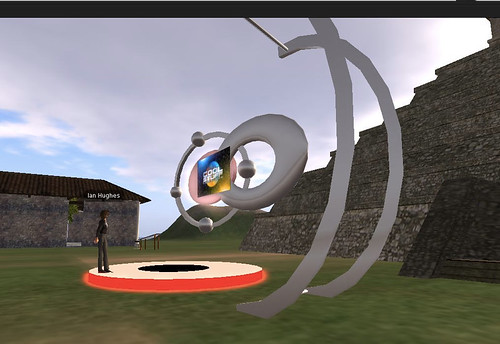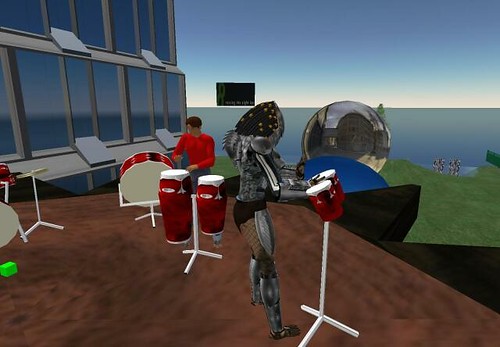In my previous Metameets post I stopped half way through day 1. So we pick up on a change in conversation this time with education.

(image from http://walyou.com/street-fighter-blackboard-fight/) As I took hardly any pictures at the event!
Education is always a good subject for virtual worlds yet is always a fight against the status quo. It is good to hear where the experts in the field are taking it.
Jolanda Verleg from Insperion started her presentation with a vision of a “Lazy Teacher” getting us to imagine a class full of students busy at work whilst the teacher sat back with their feet up on the table. This was a deliberately provocative image to challenge the nature of teaching. The premise put forward is that traditional broadcast teaching, stood in front of the class needs to be put aside in favour of more engaging techniques that use the immersion of virtual worlds with the students and allows classes to take on a life of their own. The full presentation is here and is a well thought out description of Adventure, Background, Competition and Drama (Jolanda calls those the ABCD of learning) that provide very human focused ways of learning to learn and discovering. To quote directly “Be there for them, just don’t step in front of them to block their way…”
To continue the education theme Ineke Verheul stepped up to describe a school learning project using virtual worlds with the The Chatterdale Mystery. She described an environment that recreated a village and within that a task was set for students to travel the village asking questions of residents to try and discover the location of a bomb. The aim of this was for the investigation team to be exercising their investigative skills needed in the curriculum. It has another fascinating side though in that the people they talked to were not bots but role playing fellow students. For those students this was then an exercise in practising their language skills (in this case english). So there were in fact two lessons going on with different groups interacting in the same environment.
On the schedule next was going to the the Fenêtre sur chambre, which for various reasons as it was a remote presentation did not happen. However we all agree that it is one of the most important and worthy uses of virtual worlds. People cannot be anything but touched by its impact.”windows in the bedroom” uses virtual worlds as a connection between children in long term hospital wards and their parents and friends. Creating and playing together. (It’s not about ROI or profit or efficiencies etc its about people connecting in difficult emotional situations and that is very important)
Our final education slot of the day was down to two students Lars Dijkema and Mathijs Hamers from Elde College. We had to make a fuss of them as they had just graduated the day before, so to come and talk to us was a fantastic commitment and they arrived with a lot of enthusiasm and vigour to share their project with us. The project was a computer science one, but their mentors (such as Rick Reesen, a good friend and still at IBM doing some interesting things all with virtual world flavours) and teachers helped set them on the explore the use of virtual worlds. The overall project for the class was to investigate eco friendly and positive school environments. The guys decided that the idea they wants to explore they would do by building a virtual classroom exhibit. They quickly found that expanding that idea to build the whole school and providing a shared environment for their fellow classmates to show their ideas had a powerful social effect too. In their demo of the build the first thing that struck me was the revolving door. It was spinning away at the entrance. I thought it was just there as a graphical trick but it was spinning to attract attention because it was part of an idea to generate electricity for the school from motion of the door. I thought that was a great idea, and the visual cues and where and when I saw that will stay with me. It may have already been created elsewhere but the guys had taken the idea and implemented, then shared it and now I have that idea in my head. Great stuff!
This does of course link back to Jolanda’s presentation on how to teach and engage. The ownership and drive of the students was enabled and shepherded by the teacher and the attitude of the school. Elde College has a very open attitude to the technology and what can be used and accessed. It is a model that every school should take a look at over the risk averse control mentality.
That’s enough of that for now. Still to come, entrepreneurship, TPV’s for SL, AR and a vision for the future








